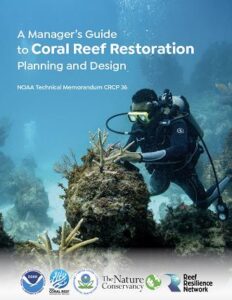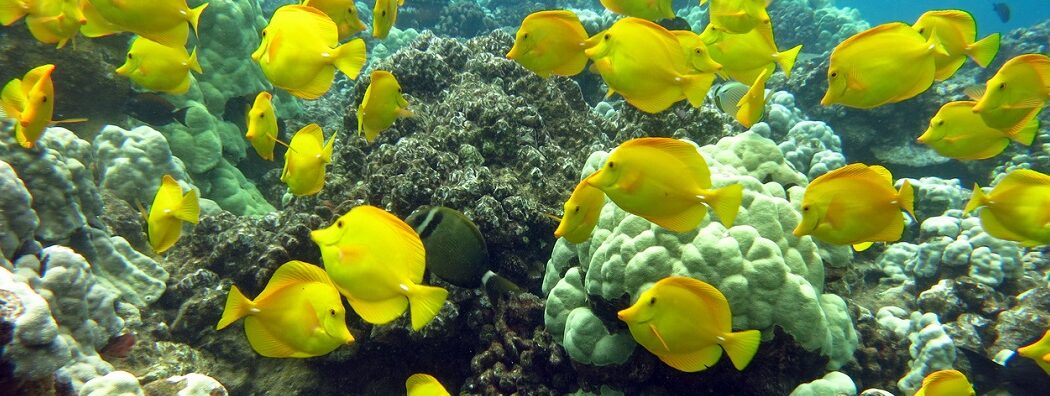The newly-published Manager’s Guide to Coral Reef Restoration Planning and Design supports the needs of reef managers seeking to begin restoration or assess their current restoration program.
Based on global best practices—and tested with managers from Hawaii, Guam, American Samoa, and the Commonwealth of the Northern Marianas Islands—the guide was developed for reef managers and practitioners, and anyone who plans, implements, and monitors restoration activities.
 As managers embark on restoration activities to combat reef degradation and enhance resilience, careful planning is required to improve the chances that restoration will be successful.
As managers embark on restoration activities to combat reef degradation and enhance resilience, careful planning is required to improve the chances that restoration will be successful.
Effective planning includes working with local experts, stakeholders, and decision-makers to determine how, when, and where restoration will be conducted, and how it can complement existing coral reef conservation and management strategies.
Resource managers are exploring how to use active restoration interventions to mitigate reef degradation and promote recovery and resilience.
The urgent motivation to sustain coral reefs has fueled a building momentum to restore and rebuild reefs, with increasing numbers of projects, research studies, and investments. However, coral reef restoration as a field is still in its infancy, with many projects and techniques remaining small-scale and experimental. As managers seek to invest in restoration activities, careful planning is required to improve the chances that restoration will be successful. The needed planning includes working with local experts, stakeholders, and decision-makers to determine how, when, and where restoration will be conducted, and how it can complement – rather than take away from – existing coral reef conservation and management strategies.
A Manager’s Guide to Coral Reef Restoration Planning and Design supports the needs of reef managers seeking to begin restoration or assess their current restoration program. The Guide is aimed at reef resource managers and conservationists, along with everyone who plans, implements, and monitors restoration activities.
Through a six-step, adaptive management planning process, the Guide helps managers gather relevant data, ask critical questions, and have important conversations about restoration in their location. The process set out in the Guide leads to the creation of a Restoration Action Plan.
Hallmarks of the process include the iterative nature of the planning cycle and ways to consider climate change, such that we learn and improve restoration efforts that can also meet long-term goals in a warming world. The first four steps of the Guide’s planning cycle focus on goal-based planning and design of restoration interventions. The final two steps discuss considerations for full-scale implementation and long-term monitoring.
Development of this Guide was made possible through financial support from the United States National Oceanic and Atmospheric Administration‘s (NOAA) Coral Reef Conservation Program the NOAA Restoration Center, the United States Environmental Protection Agency’s (EPA) Office of Research and Development, and The Nature Conservancy’s Reef Resilience Network.
Photo of Yellow tang school around a reef in Hawaii is courtesy of NOAA Fisheries/Paula Ayotte.
Download Manager’s Guide to Coral Reef Restoration Planning and Design (PDF).

